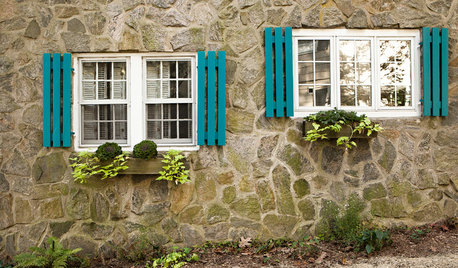Need help with distillation equipment
nandina
22 years ago
Related Stories

REMODELING GUIDESKey Measurements to Help You Design the Perfect Home Office
Fit all your work surfaces, equipment and storage with comfortable clearances by keeping these dimensions in mind
Full Story
DECORATING GUIDESDeclutter Now: Lose That Old Sports Equipment
Make more room in your closets and give your home a fresh start the eco-friendly way
Full Story0

LANDSCAPE DESIGNHow to Help Your Home Fit Into the Landscape
Use color, texture and shape to create a smooth transition from home to garden
Full Story
DECORATING GUIDESDecorate With Intention: Helping Your TV Blend In
Somewhere between hiding the tube in a cabinet and letting it rule the room are these 11 creative solutions
Full Story
COLORPick-a-Paint Help: 11 Ways to Mine Your World for Colors
Color, color everywhere. Discover the paint palettes that are there for the taking in nature, shops and anywhere else you roam
Full Story
BATHROOM WORKBOOKStandard Fixture Dimensions and Measurements for a Primary Bath
Create a luxe bathroom that functions well with these key measurements and layout tips
Full Story
PETS6 Ways to Help Your Dog and Landscape Play Nicely Together
Keep your prized plantings intact and your dog happy too, with this wisdom from an expert gardener and dog guardian
Full Story
HOUZZ TOURSMy Houzz: Online Finds Help Outfit This Couple’s First Home
East Vancouver homeowners turn to Craigslist to update their 1960s bungalow
Full Story
ORGANIZINGGet the Organizing Help You Need (Finally!)
Imagine having your closet whipped into shape by someone else. That’s the power of working with a pro
Full Story
SELLING YOUR HOUSEHelp for Selling Your Home Faster — and Maybe for More
Prep your home properly before you put it on the market. Learn what tasks are worth the money and the best pros for the jobs
Full StorySponsored






alfie_md6
a_richard_d_enfused_com
Related Professionals
Norfolk Landscape Architects & Landscape Designers · Fitchburg Landscape Architects & Landscape Designers · Byram Landscape Contractors · Fort Hunt Landscape Contractors · Glendale Heights Landscape Contractors · Goodlettsville Landscape Contractors · Hawaii Landscape Contractors · Paso Robles Landscape Contractors · Tamarac Landscape Contractors · Oxon Hill Landscape Contractors · Fairfax Decks, Patios & Outdoor Enclosures · Layton Decks, Patios & Outdoor Enclosures · Bethesda Siding & Exteriors · Longmont Siding & Exteriors · North Highlands Siding & ExteriorsnandinaOriginal Author
ellen_z7ny
Sheila7863
KAYGARDENER
mycarbumps
althea_gw
moosedog
Absent
dchall_san_antonio
CoolPlants
ecdc